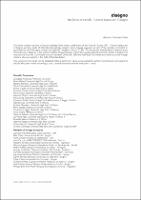Representation Challenges
Augmented Reality and Artificial Intelligence in Cultural Heritage and Innovative Design Domain
Contributor(s)
Giordano, Andrea (editor)
Russo, Michele (editor)
Spallone, Roberta (editor)
Language
ItalianAbstract
Augmented Reality (AR) and Artificial Intelligence (AI) are technological domains that closely interact with space at architectural and urban scale in the broader ambits of cultural heritage and innovative design. The growing interest is perceivable in many fields of knowledge, supported by the rapid development and advancement of theory and application, software and devices, fueling a pervasive phenomenon within our daily lives. These technologies demonstrate to be best exploited when their application and other information and communication technology (ICT) advancements achieve a continuum. In particular, AR defines an alternative path to observe, analyze and communicate space and artifacts. Besides, AI opens future scenarios in data processing, redefining the relationship between man and computer. In the last few years, the AR/AI expansion and relationship have raised deep transdisciplinary speculation. The research experiences have shown many cross-relations in Architecture and Design domains. Representation studies could arise an international debate as a convergence place of multidisciplinary theoretical and applicative contributions related to architecture, city, environment, tangible and intangible Cultural Heritage. This book collects 66 papers and identify eight lines of research that may guide future developments.
Keywords
Representation, Augmented Reality, Artificial Intelligence, Drawing, 3D Modeling, Survey, Visual Communication, Cultural Heritage, Innovative DesignISBN
9788835125280, 9788835125280Publisher
FrancoAngeliPublisher website
https://www.francoangeli.it/Home.aspxPublication date and place
Milan, 2021Series
diségno,Classification
Product design
Artificial intelligence


 Download
Download Web Shop
Web Shop